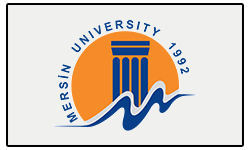Hypoglycemic Activity of Ethanol Extract of Jasminum Grandiflorum Flowers in Vivo and Cytotoxicity of Its Chloroform Isolate in Vitro
Abstract
Shiva Kumar Swamy, NC Nagalakshmi, Kumar Santhosh and HS Yogesh
Ethno pharmacological relevance: Traditionally different parts of Jasminum grandiflorum have been used to treat various ailments, including diabetes. However, antidiabetic potential of Jasminum grandiflorum on animal models of diabetes have not been evaluated.
Aim of the study: The objective of this study was to determine antidiabetic potential of ethanol extract of leaves and flowers of Jasminum grandiflorum, and different fractions of the flower extract in rodent model of streptozotocin-induced diabetes.
Materials and methods: Ethanol extract of both leaves and flowers of Jasminum grandiflorum were screened for the presence of various phytochemicals followed by acute and sub-acute toxicity in rats. Effect of Jasminum grandiflorum leaf and flower extracts on blood glucose level in normal albino rats, in glucose-overloaded healthy albino rats, and in streptozotocininduced diabetic rats was evaluated. Furthermore, based on preliminary results, fractionalization of the flower extract was carried out using petroleum ether, ethyl acetate, methanol, and chloroform. Different fractions were further tested for hypoglycemic activity in streptozotocin-induced diabetic rats.
Results: Preliminary phytochemical evaluation suggested presence of various antidiabetic metabolites in both the extracts and were found to safe up to 5000 mg/kg dose. Flower extract (500 mg/kg, p.o.) demonstrated significant hypoglycemic effect than leaf extract (500 mg/kg, p.o.) in normal rats, glucose-overloaded rats, and streptozotocin-induced diabetic rats when compared to control. Long-term effect of different fractions of ethanol extract of Jasminum grandiflorum flowers in streptozotocin model suggested that all four fractions were able to reduce blood glucose level in a time-dependent manner at 200 mg/kg dose with chloroform fraction being highly significant (p<0.001) amongst all when compared to diabetic untreated rats. Chloroform isolate from Jasminum grandiflorum flowers demonstrated enhanced glucose uptake and dosedependent cytotoxicity in L6 cell line.
Conclusion: The ethanol extract of Jasminum grandiflorum flowers as well as its various fractions have potential therapeutic value in treating diabetes, which may be due to the presence of various antidiabetic metabolites, by enhancing insulin secretion and antioxidant defense. These observations rationalize its use as ethnomedicine and hence can be considered in treating diabetes.



